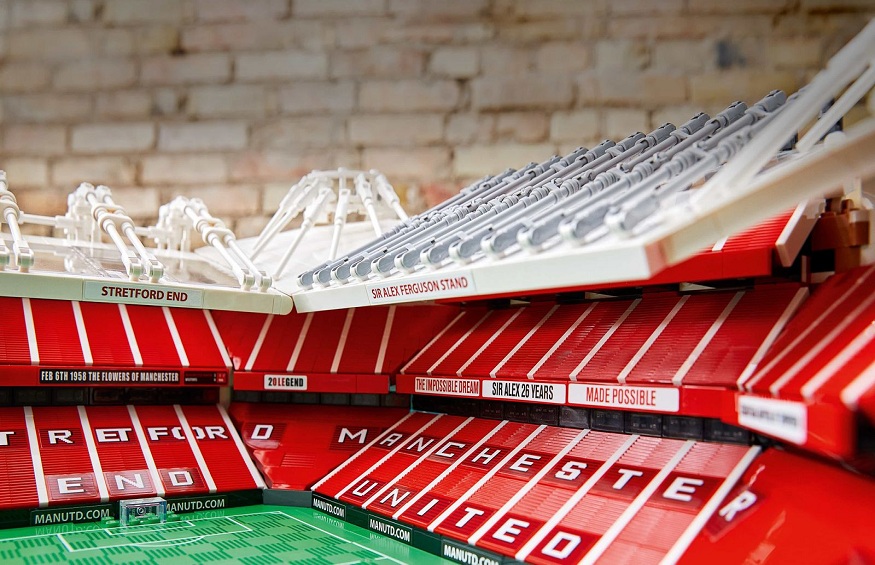In Manchester, there is still football and music but the air – architectural – is now clear. So what do architects design today in a bustling city? For the summer, an almost amorous stroll in this city bustling with brick and business. Chronicle from across the Channel.
Manchester loves a great French impressionist painter who is strangely obscure in France. French Wikipedia search results for Adolphe Valette rank his modest entry just above a redirect to Adolph Hitler. Born in Saint-Etienne, Valette moved to Manchester in 1907. His dreamlike paintings captured the built environment and life of the world’s first industrial metropolis, and captured the eternal twilight of a damp and dirty atmosphere.
He returned to France in 1928, long before Manchester became a post-war shattered city, an expanse of wasteland sandwiched between closed red brick factories and grim modular social housing. For decades, only football, then groups like The Smiths or Oasis, reminded the rest of the world of Manchester.
Adolphe Valette, Oxford Road – 1910; York Street To Charles Street – 1913.
Courtesy Manchester Art Gallery
Manchester’s air is clear these days (even if it rains a lot), and the city has rebounded from post-industrial decline to become England’s most vibrant after London. Its city center, in the heart of an agglomeration of 2.5 million inhabitants, is young and growing, and businesses and creatives are migrating from the south. Manchester University of Science and Technology is world-class and the city takes its place on the international cultural map. All these factors lead to a new architecture. So what do architects in Manchester design?
Most visible, as in many cities, is an explosion of high-rise residential towers. Unfortunately, most are generic orthogonal boxes. There are many more under construction and a parliamentary bill favoring developers over public consultation means more will follow. Both Manchester and London are driven by the rental investment market to the detriment of social housing.
However, chatting at random with Mancunians (as the natives are called) reveals that many are excited about building Dubai-style ‘mini-clusters’ on their skyline, particularly Deansgate Square which has four new towers designed by the SimpsonHaugh agency. The highest is 201m, much higher than anywhere else in the UK except London. At least these towers have cool shapes, the angles of a square plane extending so that their shiny facades are concave.
Manchester
The architect Ian Simpson also emphasizes that there is no in these towers’ door poor ( ‘poor door’) “or separate input for the cheapest apartments. Deansgate Square offers a new public space designed in granite terraces. Dotted with decorative Corten steel screens and served by a chic designer restaurant, the square overlooks a stream that has been cleaned and scrubbed of its waste and which now attracts biodiversity. Other car-free shelters are emerging in Manchester. Yet, as with high-end developments built all over the world, a certain sterility haunts these places.
Northern Quarter, Manchester’s bohemian and unplanned neighborhood, is the opposite of it all. Dense and moderately rented district made up of old buildings, some still abandoned, and car parks, its inhabitants have heart and stomach. The district is now teeming with so much life that rents are increasing and independent businesses and businesses are now feeling the pressure of gentrification. Nevertheless, these urban villages, with their human size, their texture and their diversity have a dynamism and an emotivity which escape architects and town planners.
At least the repurposing of old buildings allows to integrate the memory of the city, while saving a lot of carbon emissions. Manchester has plenty of old, solid industrial buildings to convert into lofts, and this is evidenced by the neighborhood called Ancoats, a new hotspot for the ultra-trendy loft lifestyle. Even closer to the center, the Dutch architects Mecanoo mix the old and the new in their conception of Kampus. Huge mid-rise apartment buildings zigzag against old warehouses, in the lanes, and transform the ‘skyline’ while a public garden and bar face the thriving gay village of Manchester from the other side of a canal.
The University of Manchester has a student body of over 40,000 students and, along with other universities in the city, is driving demand for architecture to house them. Manchester was quick to build towers of student residences, a recent architectural typology, with a 107-meter tower delivered in 2012 by Hodder and Partners (led by ex-RIBA president Stephen Hodder). It is located on the edge of the city center, at the end of the Oxford Road university corridor, where SimpsonHaugh has just added a second student tower.











